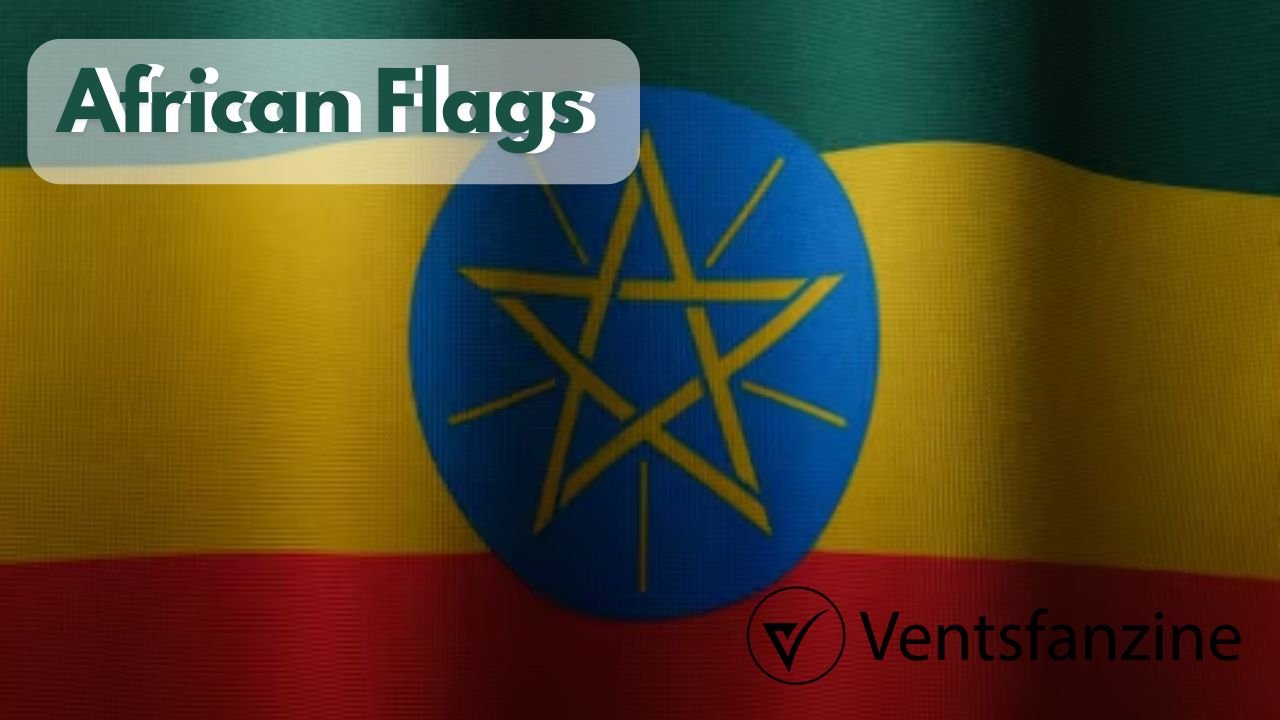Flags contain powerful symbols encapsulating a country’s information, way of life, values , and aspirations. In Africa, a continent with a rich history, each flag tells a unique story. This article delves into many African flags’ importance, dates, and layout factors and provides insights into the continent and its gifts.
Pan African colours
Many African flags feature pan-African colours: purple, inexperienced and yellow. These shades have roots in the Ethiopian flag, one of the oldest in African Flags and a photo of resistance to colonialism. Pan-African colours were later accompanied by numerous independence events and newly disaffected global locations as a symbol of team spirit and liberation.
- Red Represents the bloodshed in the struggle for independence and the sacrifices made with the help of human beings.
- Green: Symbolizes the rich natural wealth and fertile lands of Africa.
- Yellow: Indicates the continent’s wealth and intense destiny in advance.
These shades are on the African flags of many nations, including Ghana, Cameroon, Mali, and Senegal.
West African Flags
Ghana: Ghana’s flag is a combination of colours, including horizontal crimson, yellow, and green stripes with a black star in the middle. Red represents the blood of the people who died fighting for independence, yellow represents the mineral wealth of the United States, and the inexperienced symbolizes its rich forests and herbal resources. The black megastar represents African freedom and the unity of the African people.
Nigeria: The Nigerian flag is a vertical two-tone green and white flag. The green stripes represent the lush plant life of a farmer’s business, while the white stripe symbolizes peace and unity.
Senegal: The flag of Senegal features three vertical stripes of inexperienced, yellow, and pink, with the inexperienced celebrity in the middle of the yellow stripe. Green represents Islam, the primary religion in Senegal, and the scarcity and fertile lands of the U.S. Yellow represents the wealth of the United States and its colourful way of existence. However, crimson represents the struggle for independence and the sacrifices made by the Senegalese people. The green large call in the middle symbolizes harmony and choice for a brighter future.
East African Flags
Kenya: The Kenyan flag is a horizontal tricolor with black, crimson, and inexperienced stripes separated by a border. In the middle is a Maasai defense and spears. The black stripe represents the people of Kenya, the red symbolizes the bloodshed at some point in the struggle for independence, and the green represents the natural wealth of the USA. The white borders symbolize peace and honesty, while the guard and spear protect freedom.
Tanzania: The flag of Tanzania contains diagonal stripes of green, yellow, black, and blue. Green represents the United States’ herbaceous plants and agriculture, yellow represents mineral wealth, black represents human beings, and blue represents America’s lakes, rivers, and the Indian Ocean.
Ethiopia: As one of the oldest international sites in Africa, the African Flag of Ethiopia has inspired many others. The current flag features horizontal stripes of green, yellow and red, with a blue circle and a yellow giant call in the middle. Green means earth and wishes, yellow represents peace and love, and pink symbolizes electricity and bloodshed for freedom. The blue circle represents peace and the massive call represents brotherly love and destiny.
Middle African Flags
Cameroon: The African flag of Cameroon is a vertical tricolour of green, crimson and yellow, with a yellow movie star in the middle. The green stripe represents our forests and agriculture, the crimson symbolizes brotherly love and independence, and the yellow symbolizes the savannas of the northern part of the United States. The yellow superstar represents the cohesion of the dominion.
Democratic Republic of the Congo: The African flag of the Democratic Republic of the Congo features a sky blue field with a yellow superstar in the upper left corner and a diagonal pink stripe with yellow fimbriation from the decreasing lift factor to the peak angle of the fly. Blue symbolizes peace, red represents the blood of American martyrs, and yellow represents U.S. wealth and Prosperity. A . Celeb symbolizes a bright future for you. With.
Gabon: The Gabonese flag consists of three horizontal stripes: inexperienced, yellow, and blue. The green stripe represents America’s forests; the yellow symbolizes the equator and the sun, and the blue represents the Atlantic Ocean.
South African Flags
South Africa: The South African flag is one of the world’s most recognized and symbolically rich. It works like an inexperienced Y-form, separating the black, yellow, and inexperienced parts from the white, pink, and blue parts. The flag changed to the one observed in 1994 to represent the abandonment of apartheid and the beginning of the modern democratic generation. The black, green, and yellow hues are associated with the African National Congress. At the same time, the crimson, white, and blue colors come from the Dutch and British Flags, reflecting the colonial history of the United States. Form Y represents the convergence of various factors within South African Flags society and team spirit is the way forward.
Zimbabwe: The African flag of Zimbabwe contains seven horizontal stripes of inexperienced, gold, crimson, and black with a white triangle containing a crimson five-pointed big name with the Zimbabwe bird. Green represents agriculture, and gold means you. The mineral wealth of S., crimson symbolizes the bloodshed at some point in the liberation battle and black represents the black majority. The white triangle suggests peace and the purple star represents internationalism and the nation’s aspirations. Zimbabwe Bird is a rustic-wide brand representing America’s records and historical past.
Namibia: The Namibian flag is a diagonal two-tone blue and crimson with white-green triangles on the upper hoist and lower flying element and a golden sun with twelve triangular rays within the blue triangle. Blue symbolizes the sky and the Atlantic Ocean, purple represents human beings and their heroism, inexperienced means agriculture and flora, and white signifies peace and cohesion. Solar represents lifestyle and electricity.
Religious symbolism
Religion plays a huge role in the format of many African flags, reflecting the diverse, non-secular landscape of the continent. The inexperienced colouring of many flags, including those of Algeria and Senegal, represents Islam, the dominant faith in many North African Flags and West African international locations. Islamic symbols, such as the famous man or woman and the crescent moon inside the Algerian flag, underscores the importance of faith within national identification. Assessing a global location like Ethiopia with a total Christian population, they replicate their spiritual and historical past through hues and symbols that resonate with their religious history and legacy.
Flags as tools of nation-building
Flags are not the most valuable symbols, but they also serve to build a nation. They are essential in promoting cohesion and contentment throughout the country, especially in spreading up-colonial Africa, where the newly disaffected states wanted solid symbols to encourage their populations. Flags often summarize the desires and beliefs of these young international locations. For example, the flag of Tanzania, created after the merger of Tanganyika and Zanzibar, symbolizes merging the two entities into one cohesive u. S .. Planned African flag layout choices aim to sell a sense of collective identification and motif among different populations.
Evolution of flags
The arrangement of African flags has progressed over the years, reflecting changes in political regimes, societal values , and cultural influences. Some of the world’s places have outdone themselves with high-quality adaptations of their national symbols. For example, the Libyan flag has been modified more than once, reflecting shifts in governance from the Kingdom of Libya to the Gaddafi regime and beyond. These modifications often represent a ruin from the outside and a modern path for the United States of America. The development of flags in Africa demonstrates the dynamic nature of national identities and the ongoing process of defining and redefining what it means to be a nation.
Contemporary relevance
In today’s generation, African flags maintain their importance and symbolize sincere nationwide pleasure, resilience, and choice. They are prominently displayed during international sports, diplomatic missions, and national celebrations and serve as reminders. S Unique Adventure A. For example, in several stages of the Olympic Games or the African Flags Cup of Nations, flags symbolize solidarity and competitive spirit. In addition, flags are regularly used in political protests and events, embodying a call for exchange and an aspiration for a higher future.
Conclusion
African flags are rich in symbolism and records that reflect the continent’s many cultures, struggles and aspirations. They are characterized by testimony to the resilience and harmony of the African Flags people, their rich natural resources and their vibrant cultures. Each African flag tells a story and captures the essence of the country it represents. As Africa continues to develop and expand, its flags are potent symbols of this dynamic continent’s overseas gift and future.
Read More Daniel Spenrath: Inspiring Future Generations with Innovation











